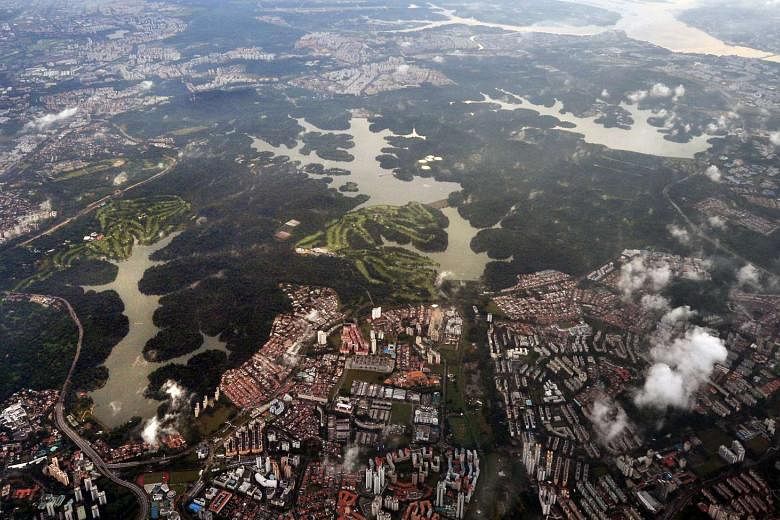SINGAPORE - The 50km Cross Island Line (CRL) will be an important part of Singapore's rail network, with about 30 stations - nearly half of them interchanges - that will offer commuters many travel options, Transport Minister Khaw Boon Wan said.
Spanning from east to west and serving residential areas such as Loyang, Pasir Ris, Hougang, Ang Mo Kio, Sin Ming, Bukit Timah, Clementi and West Coast, commuters will make at least 600,000 trips on the CRL every day, Mr Khaw told Parliament on Monday.
He was replying to a question from Mr Louis Ng (Nee Soon GRC) about the two proposed alignments of the CRL - one of which will cut through the Central Catchment Nature Reserve (CCNR) and the other to skirt around it.
Mr Khaw said that no decision has been made on which alignment will be chosen.
But noting the CRL's importance, he said the line will "significantly enhance" the rail network's resilience, and with 600,000 trips a day, its capacity and usage will far exceed that of the North-East Line. The CRL is expected to be completed in 2030.
Mr Khaw said that the longer 9km route around the CCNR will incur an extra travel time of 6 minutes, compared to the more direct 4km route that will go under the nature reserve.
Suggesting that commuters have high expectations of train efficiency, Mr Khaw quipped that in a minute of delay, a commuter could post 100 times on Twitter to "flame" the Land Transport Authority and the rail operator.
The six minutes of extra travel time, he said, could not be simply "brushed aside".
Dispelling the notion that the skirt-around would serve more residents, as it would go through estates in Upper Thomson, Mr Khaw said residents are already served by the Circle Line and the upcoming Thomson-East Coast Line.
Additionally, he said this alignment would require longer tunnels and hence ventilation facilities on the surface. This option could incur around $2 billion more in expenditure, and could result in land acquisitions, he added.
For the 4km direct alignment option, 2km will be deep below the CCNR at about 40m or 12 stories below ground level, and there will be no construction of infrastructure at the surface level within the CCNR, Mr Khaw said.
He said that more environmental and technical studies will be carried out, and only after that will an informed decision be made.
This will take into account the "potential impact on the nature reserve, the travelling distance and time for commuters, the cost to taxpayers, and the potential acquisition of homes and businesses", he added.


